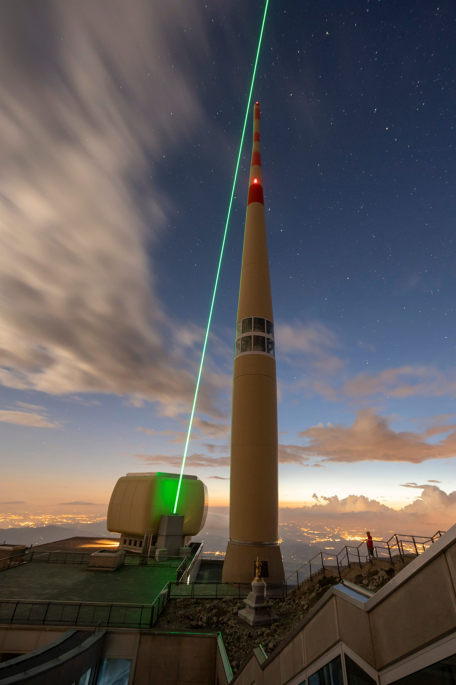Swiss scientists successfully diverted lightning with a powerful laser::Lightning discharges between charged clouds and the Earth’s surface are responsible for considerable damages and casualties. It is therefore important to develop better protection methods in addition to the traditional Franklin rod. Here we present the first demonstration that laser-induced filaments—formed in the sky by short and intense laser pulses—can guide lightning discharges over considerable distances. We believe that this experimental breakthrough will lead to progress in lightning protection and lightning physics. An experimental campaign was conducted on the Säntis mountain in north-eastern Switzerland during the summer of 2021 with a high-repetition-rate terawatt laser. The guiding of an upward negative lightning leader over a distance of 50 m was recorded by two separate high-speed cameras. The guiding of negative lightning leaders by laser filaments was corroborated in three other instances by very-high-frequency interferometric measurements, and the number of X-ray bursts detected during guided lightning events greatly increased. Although this research field has been very active for more than 20 years, this is the first field-result that experimentally demonstrates lightning guided by lasers. This work paves the way for new atmospheric applications of ultrashort lasers and represents an important step forward in the development of a laser based lightning protection for airports, launchpads or large infrastructures. A terawatt laser filament is shown to be able to guide lightning over a distance of 50 m in field trials on the Säntis mountain in the Swiss Alps.



In theory yes but it wouldn’t be a very reliable source of energy, it might be viable if there were batteries to charge that could then be released into the grid however
Sure. I suppose battery technology probably has to jump quite a bit before that would be feasible, amongst what I assume are many other issues.
Yup! There’s a few hurdles but it’ll get there!
Storage would be key, since we have some great locations in the world to build collectors.
For example around Lake Maracaibo in Venezuela, it has a geography which means there is a lightning season which can cause 150 days straight with up 9 hours of lightning every day/night and 20-40 strikes per minute at a concentration of ~250 per square km.